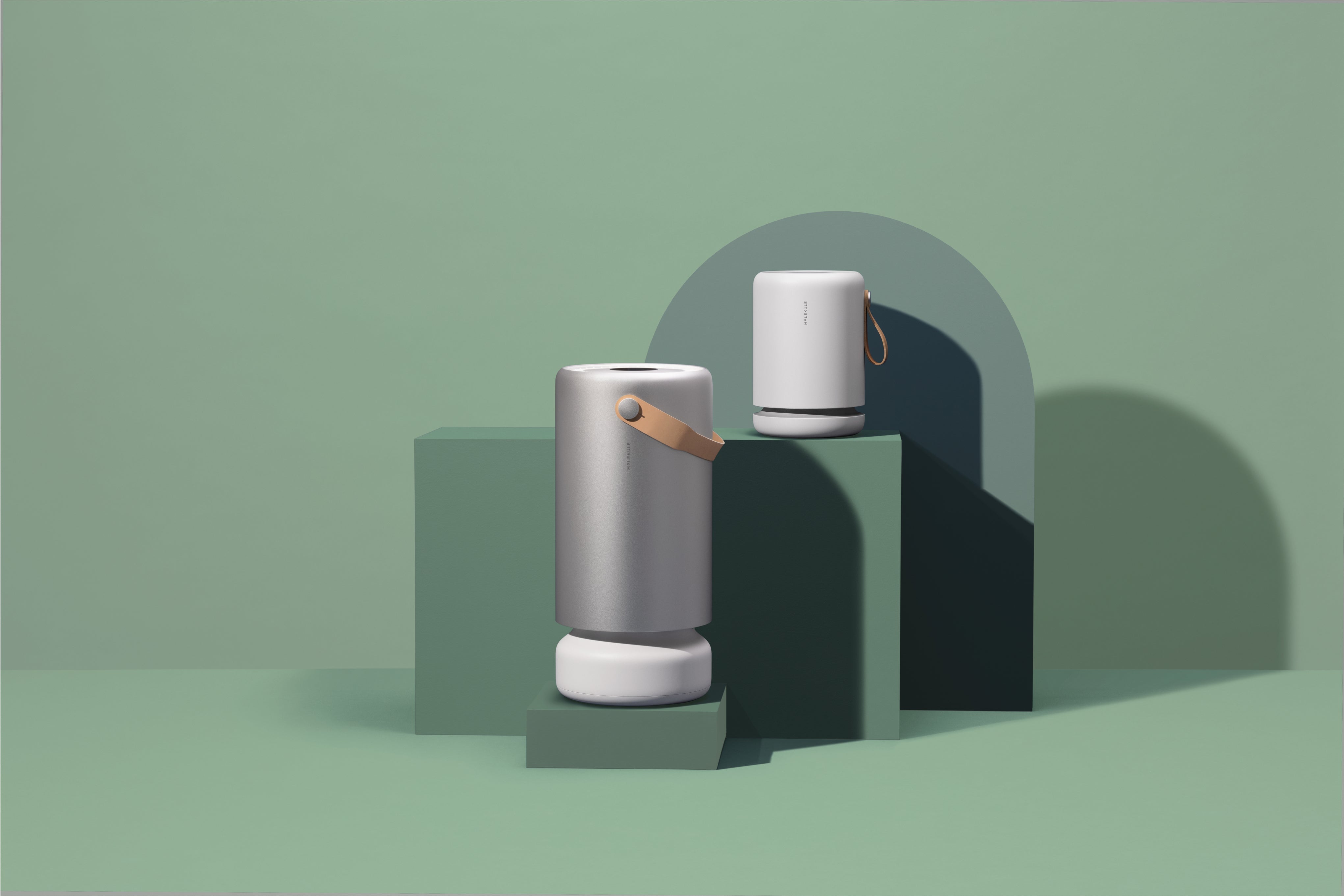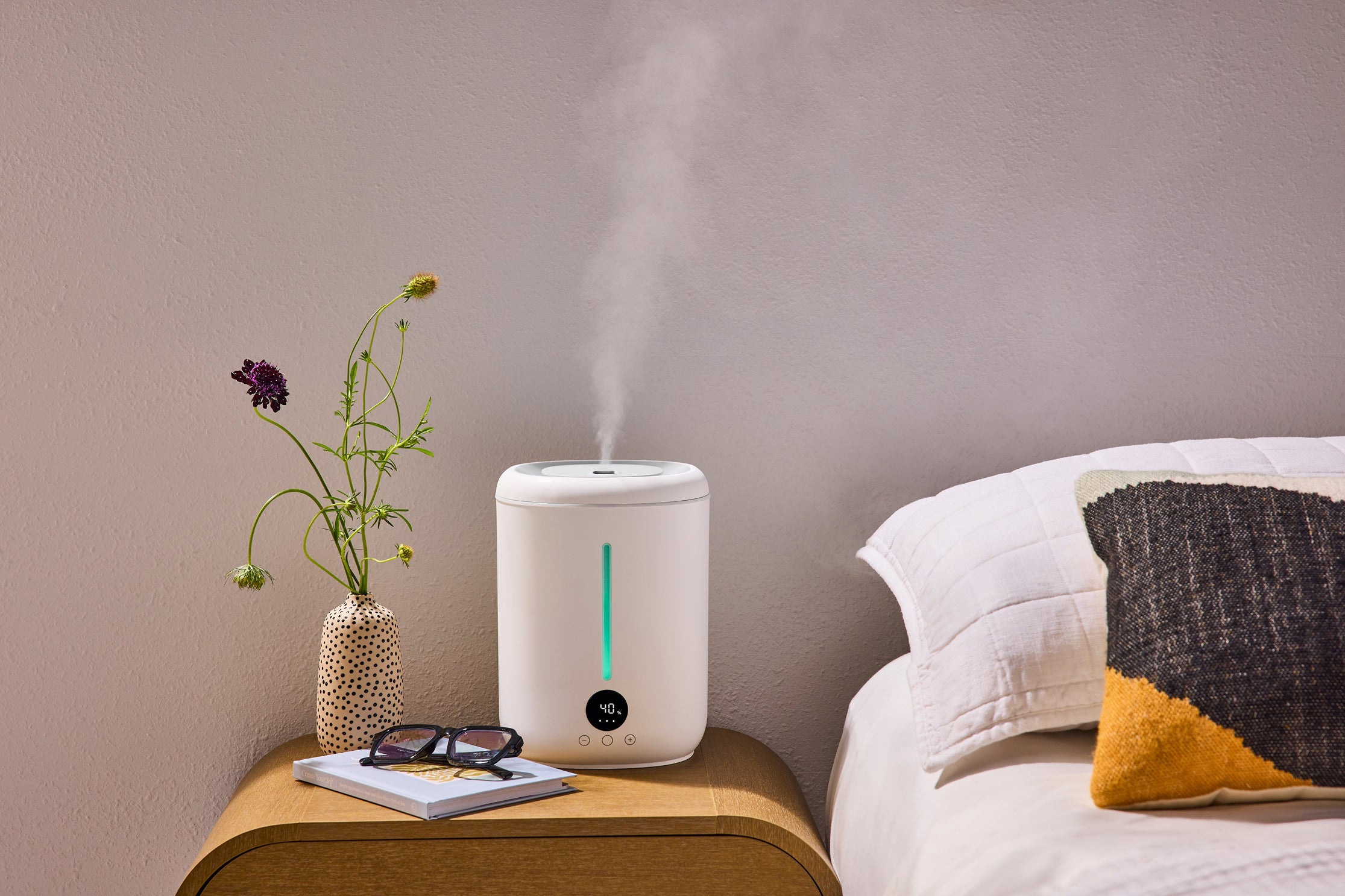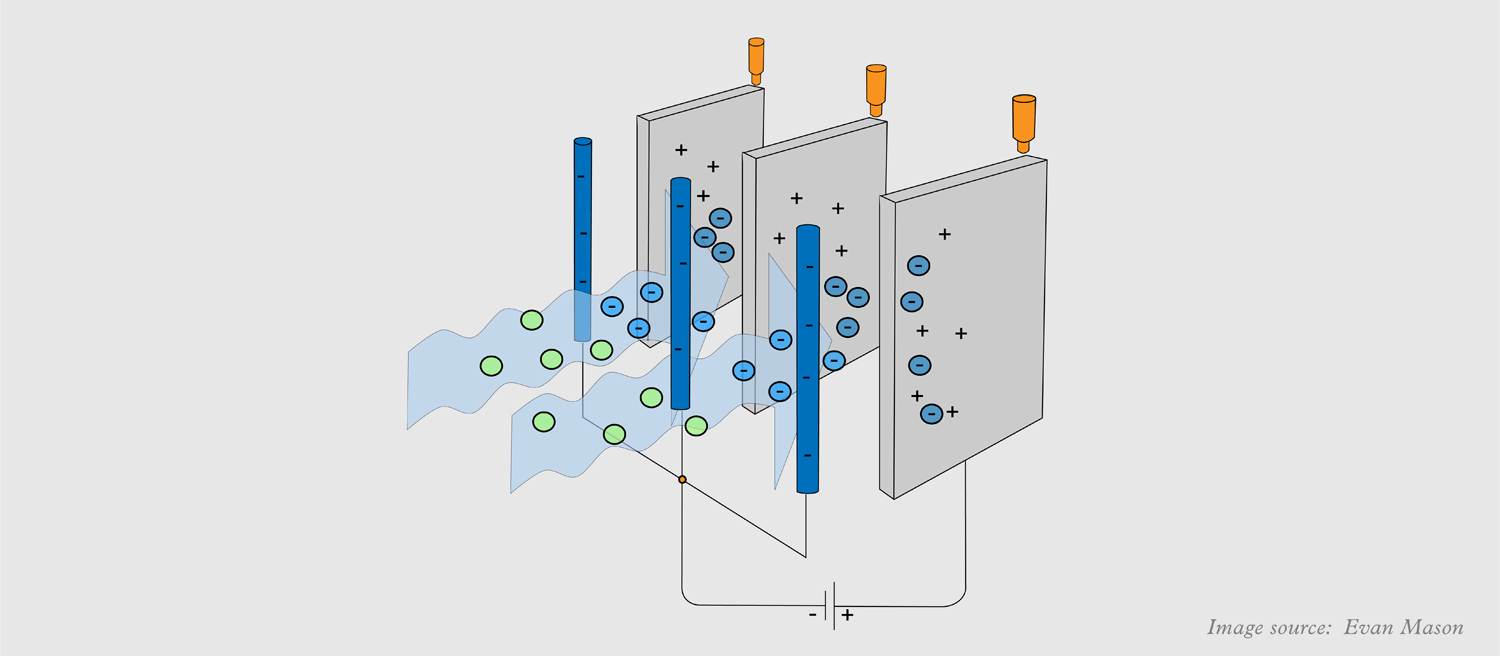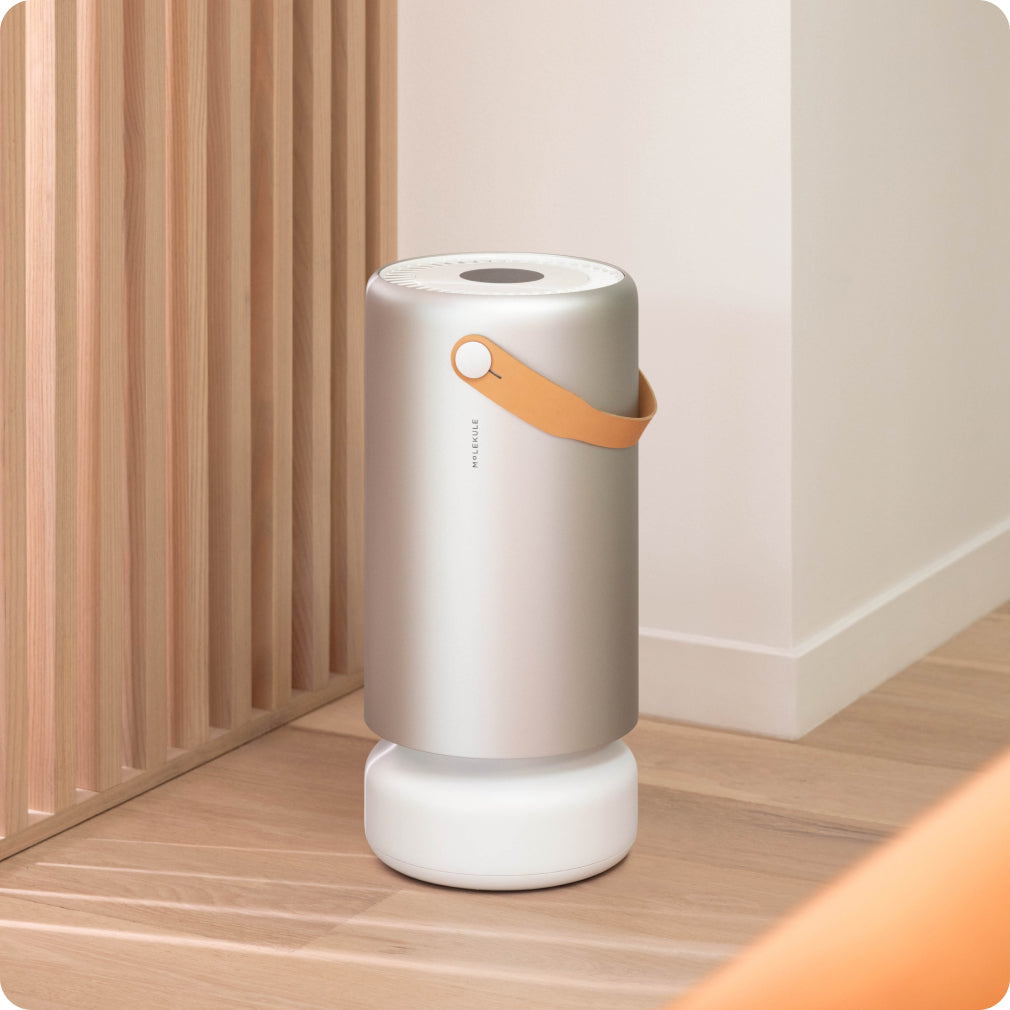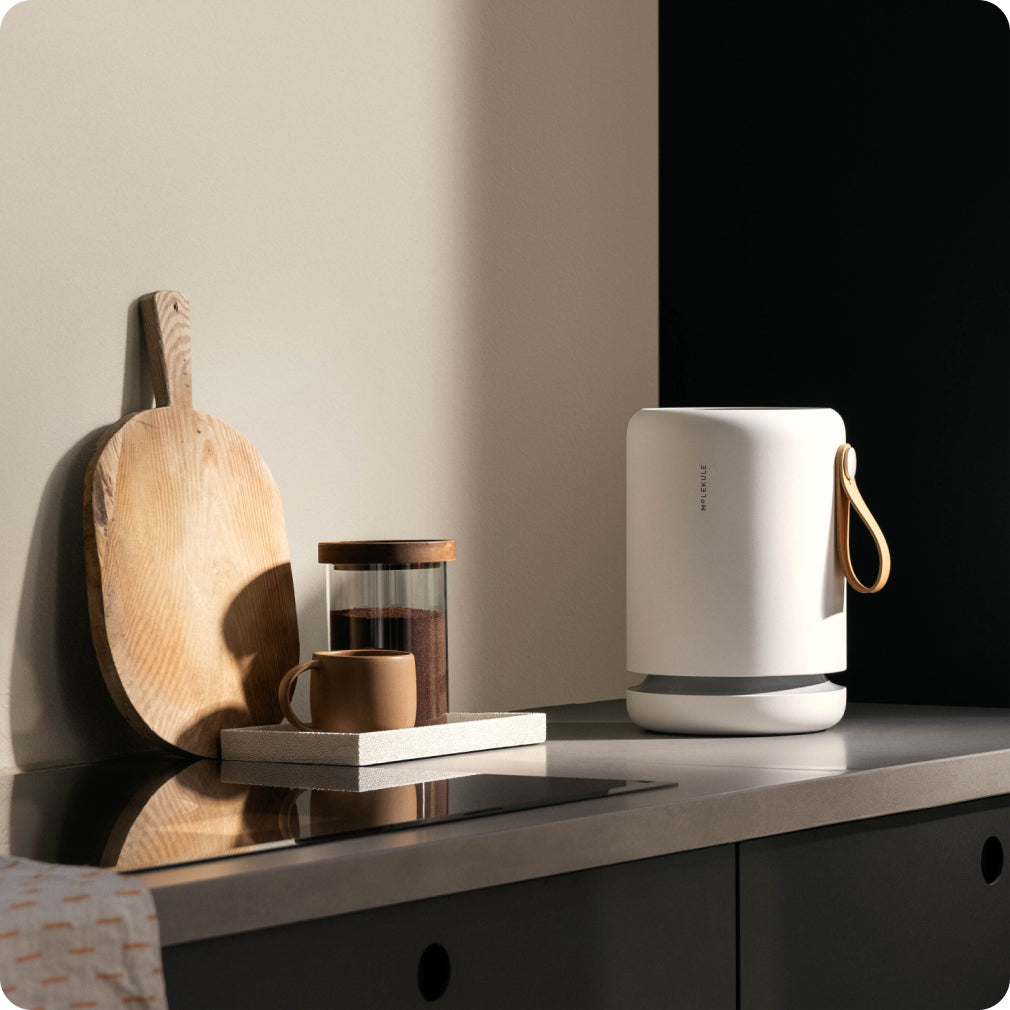Before you buy: Take a deeper look into the world of air ionizers. Explore what these “ionic air purifiers” do, their hidden dangers in producing ozone, and why you may not want them in your home.
Whether you are a healthy person, or someone who may have respiratory issues such as asthma or allergies, you may be considering purchasing an air purifier to reap the many benefits of better indoor air quality.
If you are embarking on a search to find the right air purifier for you and your family, you just might be feverishly scratching your head. With all the possible sources of pollution and all of their relative dangers, the world of air purifiers is filled with a lot of jargon, marketing fluff, and misinformation. One of our missions here at Molekule is to “clear the air” so you can make an educated decision on your quest to better air quality.
Today, we will dive into one of the more prominent air purifier technologies currently on the market: air ionizers. Like most other air purification methods, ionizers are usually stacked with other filters and cleaners that can have more of an impact on their effectiveness than ionizing.
Ionizer Air Purifiers: How Do They Work?
When you search online for an air ionizer, you may come across many terms in addition to ionizers, like ionic, bipolar ions, needle-point ion generator, plasma, and many other terms. All of these terms are used interchangeably by the market and refer to the same basic process of using electricity to charge air molecules. For the sake of consistency, we will refer to the general product group as air ionizers, because they all create ions out of air molecules. There are three basic techniques that ionizers utilize, and only one of them is good.
- Electrostatic precipitation on flat plates without a filter. These devices come by many names but share the feature of charging particles and collecting them on flat plates with the opposite charge inside the device. They typically do not have a filter made of fibers like other air cleaning devices, and also tend to lack a fan. The plates are supposed to simply be wiped free of collected pollutants periodically, which sounds convenient.
- Ion generators without filters. Also known by many names, these devices claim to charge particles then spray them out into the room. The idea is that the charged particles will settle out of the air more quickly as they stick to the walls and floor with static electricity. The reality is that they can be easily kicked back into the air by human traffic, and will also stick to the inside of your lungs if inhaled.
- Ion generators with filters. The big feature that makes an ionizing air purifier safe is to immediately collect any charged particles. A “good” ionizing air purifier is designed to use the charge to stick the particles to a filter, not the walls, floor, or your body.

(Above) Collecting plate of an electrostatic precipitator ionizer air purifier.
The Infamous “Ionic Breeze”
When you think of an air ionizer, the first air cleaner that might crop up may be The Sharper Image Ionic Breeze (an electrostatic precipitator ionizer). The Sharper Image’s impressive infomercials were all over television back in the late 90’s, seemingly offering a futuristic and efficient approach to cleaning the air.
These advertisements did a great job, and sold the devices into 3.2 million households. But a deeper investigation by the consumer advocate magazine Consumer Reports found problems with the Ionic Breeze bad enough to eventually bankrupt The Sharper Image in 2008.
The downfall of the Ionic Breeze had its catalyst due to an investigative report published by Consumer Reports. In two separate reports, Consumer Reports tested fan-driven air purifiers against the Ionic Breeze and other similar devices. They found that these ionic air purifiers could only move a small fraction of the air that a device with a fan can – a natural conclusion, given that you can feel air blasting out of a purifier with a fan but the Ionic Breeze just sits there quietly.
What really brought upon the decline of the ionizing air cleaners was Consumer Report’s second finding that these devices were generating unacceptable levels of ozone, a byproduct created because of how they work.
Ozone, according to the EPA, can cause harmful health consequences such as chest pain, coughing, shortness of breath and throat irritation.
Ozone is a form of oxygen produced when regular oxygen is charged, so it stands to reason that generating ions is also generating ozone. Ozone is one of the EPA’s criteria air pollutants to be monitored and avoided, particularly by those who suffer from allergy or asthma as ozone can trigger symptoms.
Because of Consumer Report’s revelation, sales of the Ionic Breeze ceased. Sharper Image was bought and sold a few times until a relaunch a few years ago in 2019. The Ionic Breeze is no longer sold, but several models of “Ionic Comfort” air purifiers are available that sport several fans to move air properly. What’s more, they are listed on the CARB website as ozone-safe, like any air purifier should be.
Air Ionizer Dangers: Ozone Production

Chart: “Air Ionizer Dangers” showing levels of ozone (ppb) and corresponding health impacts.
Air ionizers that produce ozone levels greater than 50 ppb fall into the moderately concerning or unhealthy ranges and should be avoided.
Because most ionizing air cleaners produce ozone, a byproduct that has been examined through almost a century as a harmful pollutant and a known lung irritant – you may assume that these products have long since been removed from the market. However many manufacturers and retailers continue to carry and sell air ionizers and ozone generators, despite the danger of ozone production.
Fact: Consumer Reports tested five popular ionizing air purifiers in 2008 and found them to produce more than 50 ppb (parts per billion) of ozone near the machine.
The EPA is clear that no ozone generator should be sold as an air cleaner. They may be used in unoccupied spaces to kill mold and similar infestations, however. Ozone exists in the air for just a few hours before it turns back into oxygen, so with proper ventilation ozone can be used safely by professionals.
For the average consumer, government bodies such as the EPA have produced literature and consumer brochures warning about the dangers of indoor ozone.
Ozone health standards: the FDA requires ozone output of indoor medical devices to be no more than 50 ppb (parts per billion).
Safely designed ionizers on the market control their ozone output with carbon filters or some other way of preventing its release. If you must purchase a specific air purifier with ionizing features, check to be sure it is listed on the California Air Resource Board’s list of ozone safe air purifiers. There are many purifiers that use ionization or plasma without fouling the air with ozone. If unsure, avoid any potential ozone build-up in your home by skipping air purifiers with ionizing features. As a last resort ozone monitors are around $100 and will tell you for sure if there is a problem.
Be Very Careful with Air Ionizers
If you have made it down this far and digested all the information about air ionizers (whether they are marketed as an ionic air cleaner or ionizer) – you probably realize by now that most people should be extremely wary when buying an air purifier with an ionizing feature.
Because the process is so simple, manufacturers may include ionizing features into their air purifiers to simply “pad” the feature list to justify the air purifier’s higher cost. There is some irony in purchasing a product that is supposed to improve your indoor air quality, but instead introduces a pollutant byproduct into your home. It is unfortunate that despite a very public warning from a reputable consumer advocate outlet, California is one of the few places where it is actually illegal to sell products that could result in exposure to unsafe levels of ozone.
